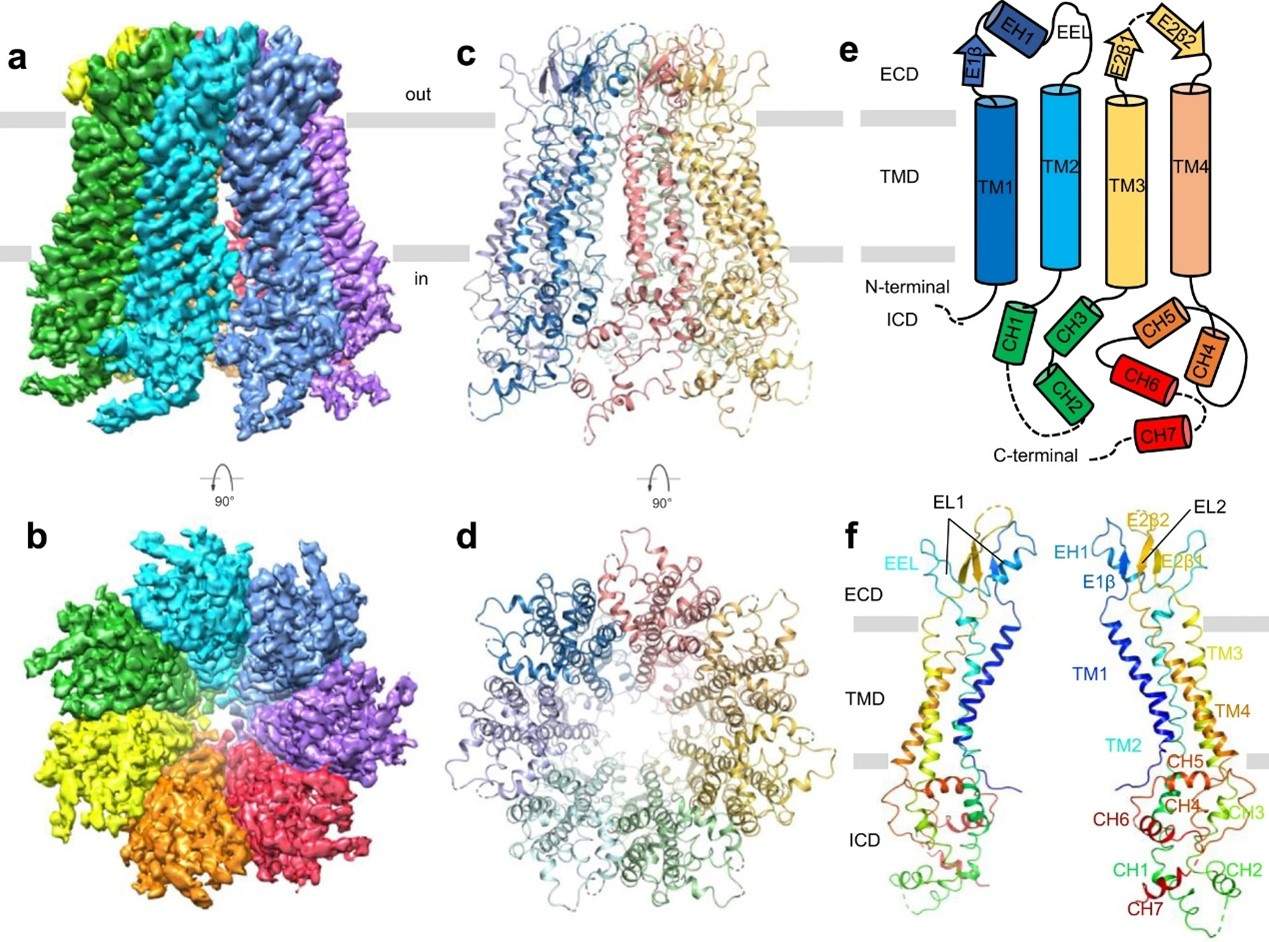AlphaMol discovered a new drug target for brain cancer
AlphaMol made breakthroughs in understanding of a brain cancer related target. By resolving the 3D structure of this important target Panx2 coupled with computational simulations, the molecular mechanisms were illuminated which could guide Panx2-based drug discovery for brain cancer.
ATP membrane pore channel protein plays an important physiological role in human physiological processes, including immune regulation, energy generation, and cancer.
Pannexins protein family, which includes Panx1, Panx2, and Panx3, can form macroporous non-selective TM channels. They play an important role in cell communication and homeostasis. Panx2 protein is the largest Pannexins family member. It is mainly expressed in the central nervous system . Our team solved the high-resolution structure of the Panx2 membrane protein through the freezing electron microscope. It found that Panx2 is a four-TM domain protein with seven monomer proteins gathered together, forming a transmembrane pore. By comparing the structures of Panx2 and Panx1, the team speculated that Panx2 is the channel of ATP.
The abnormal function of ATP membrane pore channel transmembrane (TM) protein leads to severe consequences such as ischemic cerebral infarction, glioma, and pleomorphic malignant glioma.The total survival time of patients with a higher level of Panx2 is longer, which suggests that Panx2 may have an anti-tumor effect in the early stage of glioma.
This work illuminated the 3D structures of Panx2 transmembrane protein at the atomic level. It helps to understand the fundamentally biological functions of Panx2 which provides an insightful view into brain cancer drug discovery.
Reference
Cryo-EM structure of human heptameric pannexin 2 channel. Nature Communications volume 14, Article number: 1118 (2023) doi:10.1038/s41467-023-36861-x
ATP membrane pore channel protein plays an important physiological role in human physiological processes, including immune regulation, energy generation, and cancer.
Pannexins protein family, which includes Panx1, Panx2, and Panx3, can form macroporous non-selective TM channels. They play an important role in cell communication and homeostasis. Panx2 protein is the largest Pannexins family member. It is mainly expressed in the central nervous system . Our team solved the high-resolution structure of the Panx2 membrane protein through the freezing electron microscope. It found that Panx2 is a four-TM domain protein with seven monomer proteins gathered together, forming a transmembrane pore. By comparing the structures of Panx2 and Panx1, the team speculated that Panx2 is the channel of ATP.
The abnormal function of ATP membrane pore channel transmembrane (TM) protein leads to severe consequences such as ischemic cerebral infarction, glioma, and pleomorphic malignant glioma.The total survival time of patients with a higher level of Panx2 is longer, which suggests that Panx2 may have an anti-tumor effect in the early stage of glioma.
This work illuminated the 3D structures of Panx2 transmembrane protein at the atomic level. It helps to understand the fundamentally biological functions of Panx2 which provides an insightful view into brain cancer drug discovery.
Reference
Cryo-EM structure of human heptameric pannexin 2 channel. Nature Communications volume 14, Article number: 1118 (2023) doi:10.1038/s41467-023-36861-x

